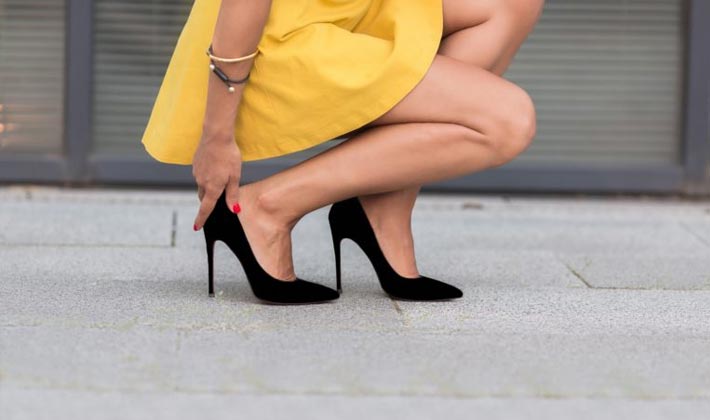
In October, Ontario MPP Cristina Martins introduced a private member’s bill to prevent employers in Ontario from requiring workers to wear unsafe footwear (specifically high heels) to work. Ms. Martins says high heels should not be a requirement of an employee’s uniform or dress code; it should be employees’ not employers’ choice whether they wear them. Earlier this year, British Columbia adopted similar legislation banning mandatory high heels at work.
I applaud Ms. Martins and British Columbia for taking these important steps. High heels can cause foot, back and knee injuries and no employee should be required to wear them. High heels force your weight onto the ball of your foot, a part of your body that is not naturally designed to bear weight. Shoes that lift your heels, also shorten your calf muscles. To prevent you from toppling forward, the muscles in your knees, hips, pelvis and lower back are forced to work harder than normal. The higher the heels and the more frequently you wear them the greater the pain and the risk of long term damage to your body.
Employers in industrial workplaces or construction have strict guidelines in place to protect their employees’ feet from workplace accidents and steel toed safety shoes and boots are the norm. Healthcare facilities have similar requirements; it would be absurd to see healthcare employees in anything other than soft soled, supportive shoes to help them through the long days they spend on their feet. Why then should our standards be different for women working in the hospitality industry who spend equally long periods on their feet?
If you choose to wear high heels, for work or pleasure, I recommend the following:
- Select heals that are 2.5 cm or less and have a solid, wide base. This will maximize your support and reduce the pressure on the ball of your foot.
- Limit heels higher than 2.5 cm for special occasions such as weddings or parties. When purchasing higher heels select ones that have a platformed forefoot and incorporated toe spring as they will provide some cushioning to the ball of your foot.
- Avoid heels that have very narrow toes; look for styles that accommodate your foot’s length and shape. If your high heels don’t fit well you are at risk of developing corns, bunions, blisters and even nerve damage.
When it comes to high heels, Canadian Certified Pedorthists recommend balancing style and comfort. If high heels are part of your personal style, follow the tips above to reduce your risk of injury. However, nobody should be told they must wear high heels to work. It’s time for Ontario to adopt legislation that protects workers’ feet in all industries.
By Amy Chapman, C. Ped (C), Kingston, Ont.
